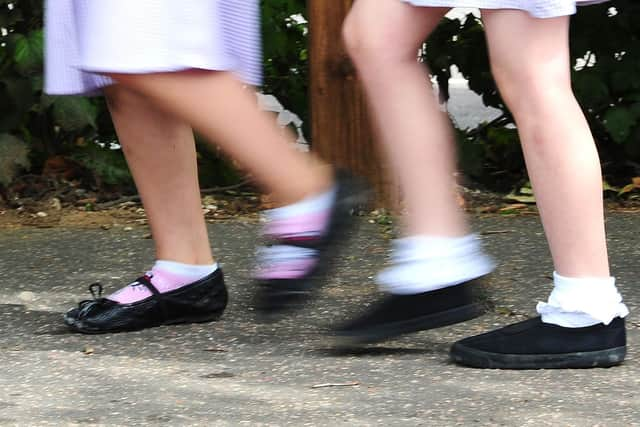One in three Yorkshire children living in relative poverty, shock figures show
A study carried out by Loughborough University for the End Child Poverty Coalition shows 33 per cent of children in the region are defined to be living in poverty according to official Government statistics – above the national average of 27 per cent and the third worst in the region behind only London and the West Midlands.
Bradford has the highest rate of child poverty in the region with 39.8 per cent.
Advertisement
Hide AdAdvertisement
Hide AdThe figures relate to 2020/21 and found in that year, 3.6 million children were recorded as living in poverty.


Nationally, the percentage of children living in relative poverty – less than 60 per cent of the median income once their family’s housing costs are taken into consideration – fell from 31 per cent to 27 per cent between 2019-20 and 2020-21, according to analysis.
The End Child Poverty Coalition said this is likely due to Government measures during the pandemic, such as temporarily increasing Universal Credit by £20 a week.
But despite the overall UK-wide annual fall, child poverty rose in four regions, including Yorkshire, along with the North East, the East of England and Wales.
Advertisement
Hide AdAdvertisement
Hide AdAnd while the UK child poverty rate has fallen by two percentage points since 2015, it has risen in five regions over this time. The biggest increase was in the North East, a rise of 12 percentage points to reach 38 per cent, followed by six percentage points in Yorkshire and the Humber and five percentage points in Wales.
The slight fall in national child poverty levels recorded at the start of the pandemic has been attributed to the now-removed £20 uplift in Universal Credit.
There are concerns that the removal of the temporary uplift will show an increase in child poverty when the statistics for 2021/22 are released next year. Even those figures will not take into full account the ongoing impact of fast-rising inflation which is still taking effect on households budgets.
A statistical model is used to estimate child poverty after housing costs which draws on household survey data alongside local area statistics on private rent levels.
Advertisement
Hide AdAdvertisement
Hide AdJoseph Howes, chair of the End Child Poverty Coalition, said: “The additional £20 support from the Government during the Covid crisis does appear to have affected the figures positively in most areas. This shows that change is possible, these levels of child poverty do not have to be the norm. There will always be conflicting government priorities, but surely the wellbeing of the most vulnerable children in our society should be front and centre, particularly as we go through the most severe period of price rises for 40 years.
“It remains incredibly worrying that at a moment like this there is nothing in the government’s Levelling Up strategy on this issue. I just don’t understand this, we must see a national child poverty strategy created, it is heartbreaking that there isn’t one when we can see evidence that shows change really is possible.
“It still feels like we are on the edge of a precipice. There is significant concern that the numbers of children in poverty will now rise again sharply with families facing huge cost increases in the coming months.”
Dan Paskins, Director of UK Impact at Save The Children and Vice Chair of the End Child Poverty Coalition said: “It’s an outrage that child poverty figures in this country remain so high, even if the statistics show a slight decrease in numbers overall. Growing up in a home where your parents are struggling to make ends meet can leave lasting scars and we are worried that while levels remain this high, children are at risk of growing up feeling anxious, isolated and lacking self-worth.
Advertisement
Hide AdAdvertisement
Hide Ad“Treasury investment in families on low incomes can see children lifted out of poverty – we saw this with the £20 uplift. The former Chancellor’s recent economic package was welcome but has in reality just kept families treading water, all it has done is help with some of the increased costs but it has not prevented a real terms cut in income. There must now be an immediate focus on the Universal Credit system as a means of helping families on the lowest incomes.”
The new statistics coincide with new research by Turn2us ‘How Many More’ campaign, which found around half (49 per cent) of their surveyed users with children (compared to 47 per cent without), reported having no money, or less than no money to live on each week after covering essential costs.
Seven in ten Turn2us users who were single parents surveyed reported that they would be using recently announced cost of living measures to repay debt. The End Child Poverty Coalition is calling on the UK government to continue to find ways of making social security more adequate so that every family can afford the essentials.
At The Yorkshire Post, we are committed to speaking truth to power on behalf of the people who call God’s Own County their home. Our political team and Westminster Correspondent are Yorkshire's eyes and ears in the corridors of power.
If you’d like all the latest political news straight to your inbox, you can sign up to our newsletter for free at: https://www.yorkshirepost.co.uk/newsletter